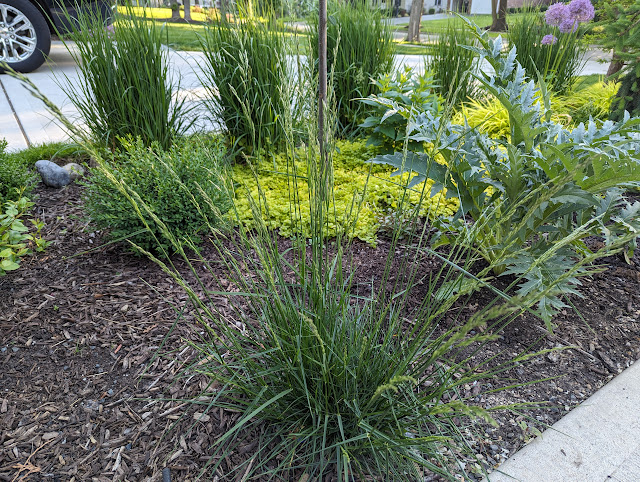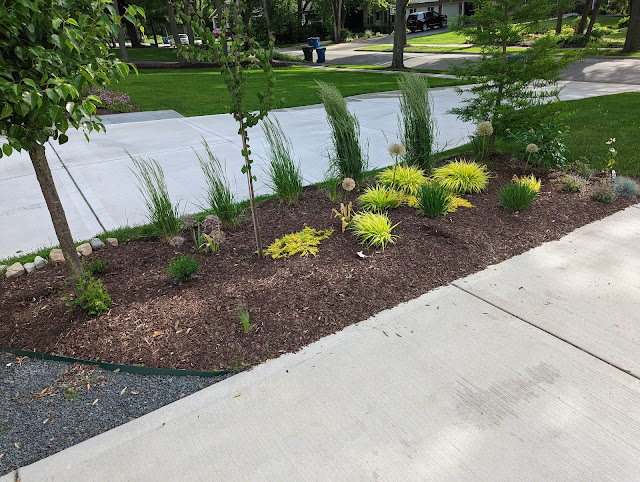What Prairie Dropseed Looks Like After Two Years - May 2024

I bought and planted a couple of Prairie Dropseeds ( Sporobolus heterolepis ) in the Spring of 2022. They're highly sought-after from all kinds of gardeners - native folks, new perennial movement people, even more formal gardeners. And they did...nothing. Like..nothing. They looked like a short clump of Kentucky Blue Grass that was out of place in a garden bed. That's how they looked in their first year (2022) and their second year (2023). This Spring, I cut everything back to the ground and suddenly...the Prairie Dropseed is showing itself with a lot more growth and a bunch of seed heads. Here, below is the one that I can identify - IB2DWs. Looks lovely: I can see the appeal in these now. Can they be divided? I hope so.




